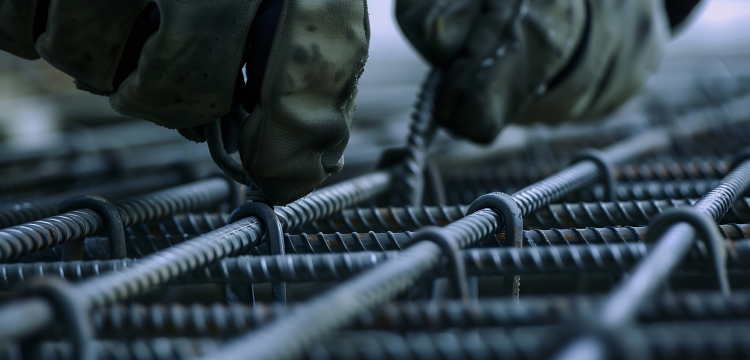The Thin Steel Threads That Hold Buildings Together: Essential know-how on Binding Wires
Steel binding wires play a crucial yet often overlooked role in modern construction. These thin, flexible wires are essential for securing reinforcement bars (rebars) and ensuring the structural integrity of concrete structures. In this comprehensive guide, we’ll explore the importance, applications, and benefits of steel binding wires in the construction industry.
What are Steel Binding Wires?
Steel binding wires are thin, malleable wires made from high-quality steel. They’re specifically designed to tie and secure reinforcement bars in concrete structures. These wires come in various gauges and finishes, allowing for versatility in different construction projects.
The Crucial Role of Steel Binding Wires
- Securing Rebars: The primary purpose of steel binding wires is to firmly hold reinforcement bars in place. This ensures that the rebars maintain their position during concrete pouring and curing, which is essential for the overall strength and durability of the structure.
- Ensuring Structural Integrity: By keeping rebars properly aligned, binding wires contribute significantly to the structural integrity of buildings, bridges, and other concrete structures. This alignment is crucial for the even distribution of stress and load-bearing capacity.
- Enhancing Stability: Steel binding wires provide stability to the rebar framework, preventing displacement during the concrete pouring process. This stability is vital for maintaining the designed structural specifications.
Key Features and Benefits
- Flexibility: Steel binding wires are highly flexible, allowing construction workers to easily manipulate them around rebars of various shapes and sizes. This flexibility ensures tight, secure bindings in complex rebar configurations.
- Strength: Despite their thin profile, these wires possess remarkable tensile strength. This strength is essential for withstanding the pressures exerted during concrete pouring and the ongoing stresses in completed structures.
- Corrosion Resistance: Many steel binding wires are galvanized or coated to resist corrosion. This feature is crucial for maintaining the long-term integrity of concrete structures, especially in moisture-prone or coastal environments.
- Cost-Effectiveness: Steel binding wires are an economical solution for securing rebars, offering a perfect balance of performance and affordability for construction projects of all scales.
Applications in Construction
- Foundations: In foundation work, binding wires secure rebar grids, ensuring a solid base for the entire structure.
- Columns and Beams: These wires are vital in tying vertical and horizontal rebars in columns and beams, crucial elements in a building’s frame.
- Slabs and Floors: For concrete slabs and floors, binding wires hold mesh reinforcements in place, contributing to the even distribution of loads.
- Bridge Construction: In bridge building, these wires play a critical role in securing complex rebar structures that must withstand significant stresses.
- Precast Concrete Elements: Binding wires are used in the production of precast concrete elements, ensuring reinforcement integrity during the casting process.
Best Practices for Using Steel Binding Wires
- Proper Tightening: Ensure that the wires are tightened sufficiently to prevent rebar movement but not so tight as to risk damaging the bars.
- Correct Wire Gauge: Choose the appropriate wire gauge based on the size of the rebars and the specific requirements of the project.
- Quality Inspection: Regularly inspect the binding wires for any signs of wear, corrosion, or damage, especially in exposed areas.
- Safety Considerations: Always follow safety guidelines when handling and cutting steel binding wires to prevent injuries.
Conclusion
Steel binding wires are indispensable in modern construction, playing a vital role in ensuring the strength, stability, and longevity of concrete structures. Their flexibility, strength, and corrosion resistance make them ideal for a wide range of building applications.
At Shree TMT, we recognize the importance of every element in the construction process. While we specialize in high-quality TMT bars, we understand that complementary materials like steel binding wires are crucial for achieving optimal structural integrity. Shree TMT binding wires, crafted with a consistent 20G size throughout their length, are perfectly suited for tying TMT rebars and securing structural elements in construction. Choosing Shree TMT as your supplier ensures that your projects are reinforced with quality that lasts.

